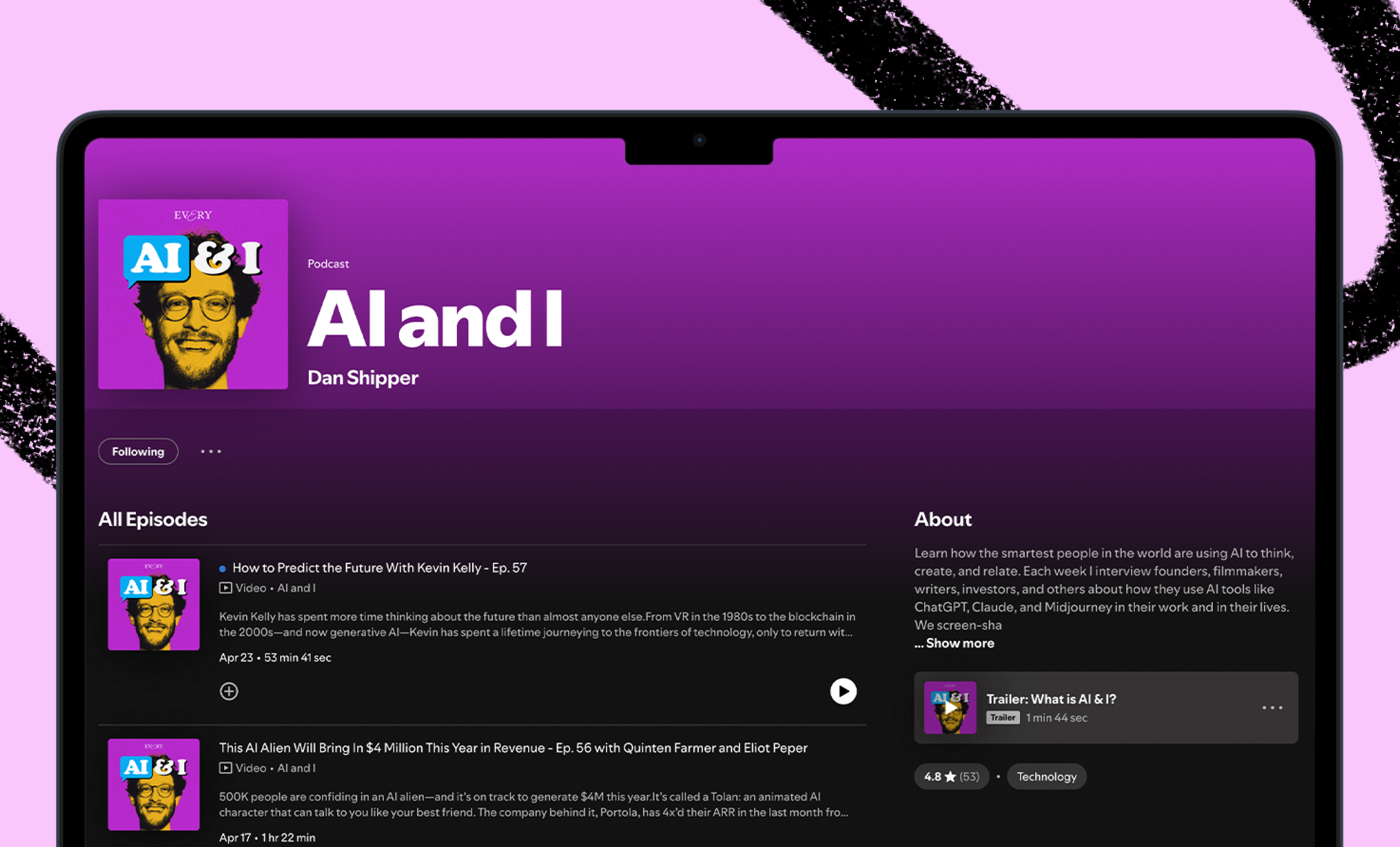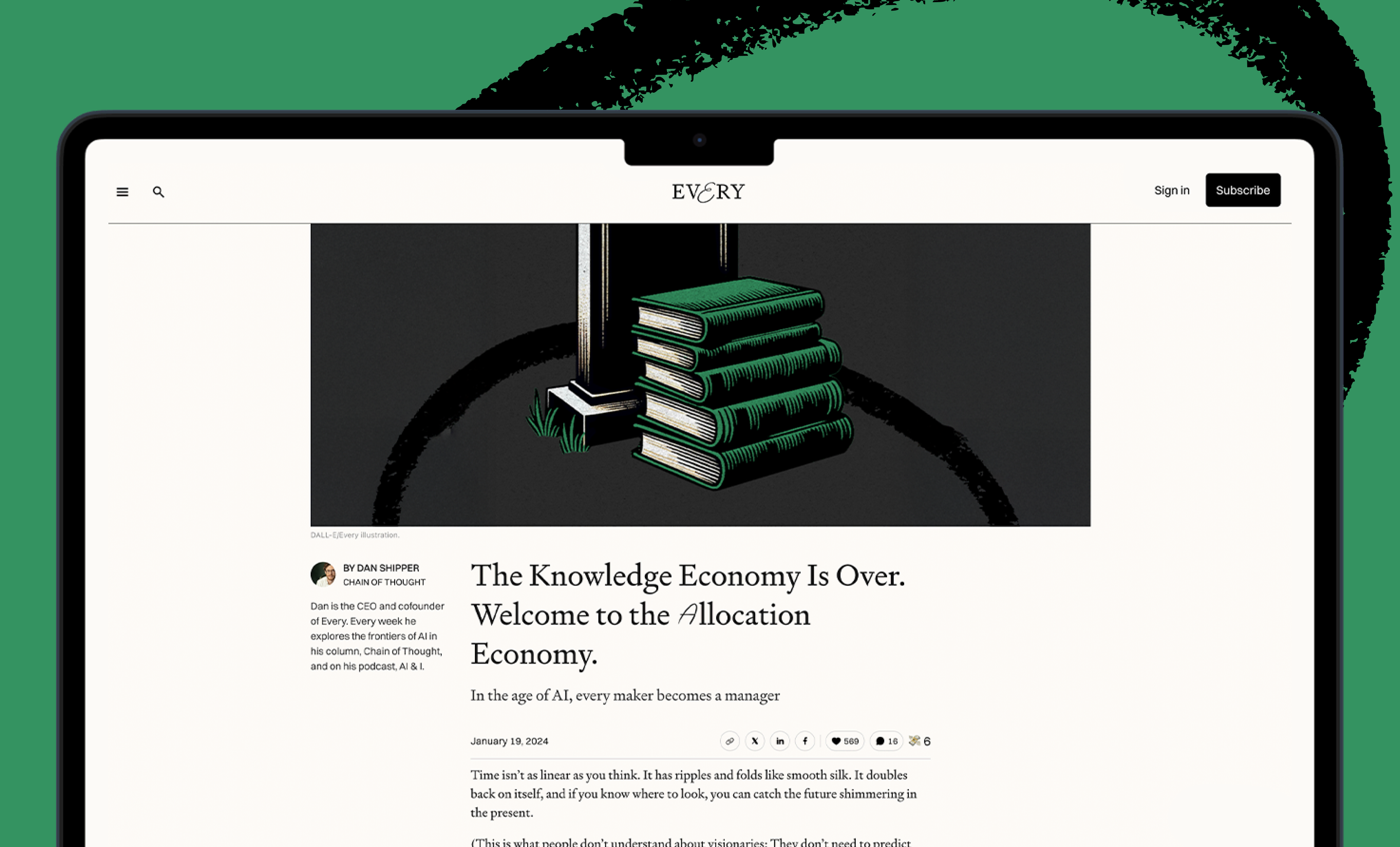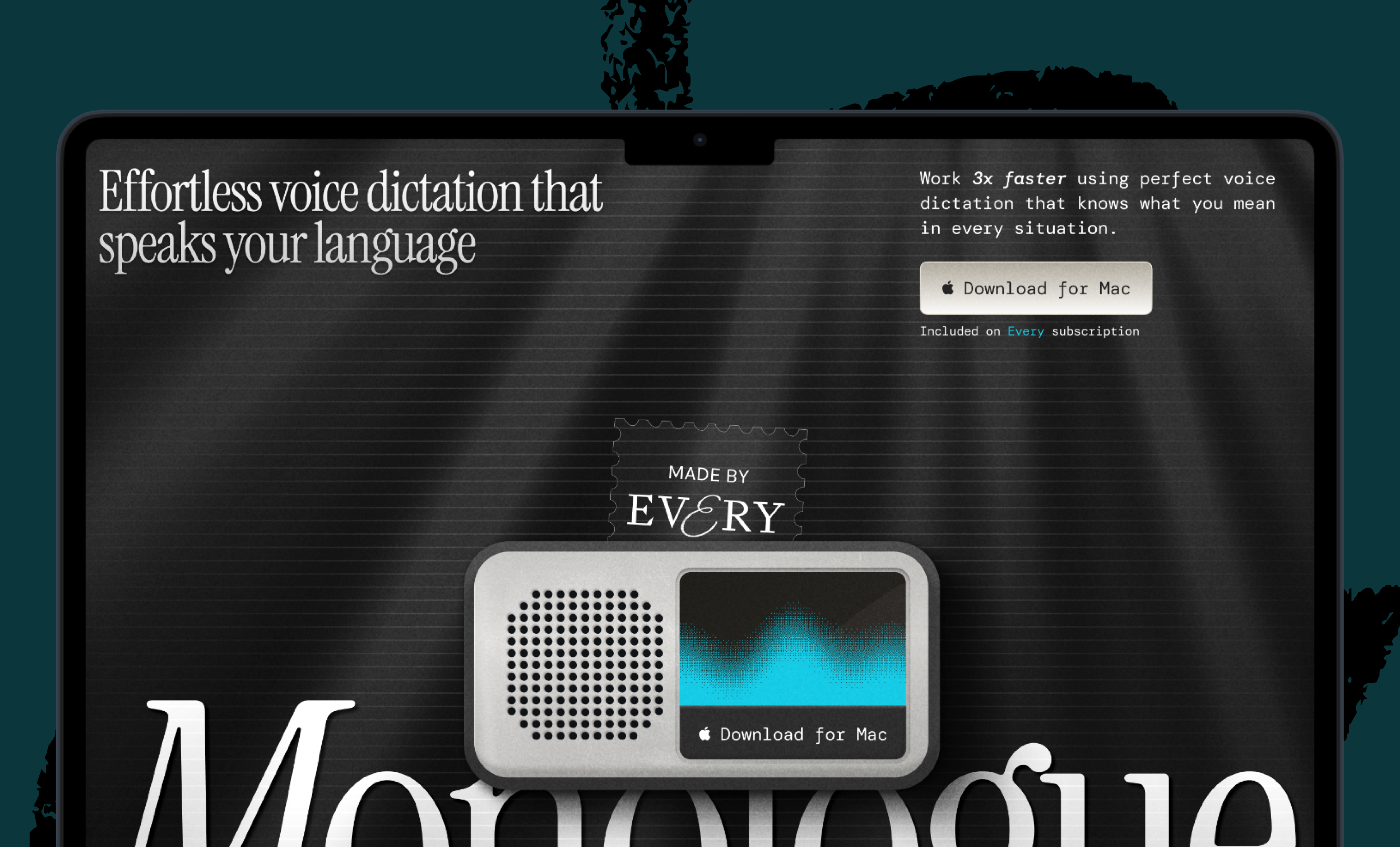
Sponsored By: Minimal
Focus is your most valuable asset. You deserve to use tools that respect it. Introducing Minimal - the notes and writing app designed for focus.
• The first and only meditation-inspired writing app.
• Lets notes die with the Note Lifetime for a clean, organized mind.
• Write collaboratively in a silent space.
Join thousands of focused, thoughtful writers by downloading Minimal on the App Store.
Some of the most impactful therapy sessions of my life haven’t come from a therapy session. They didn’t involve exchanging money, or billing insurance. In fact, they didn’t even involve a therapist at all.
Instead, they were part of a peer coaching practice that I’ve been doing for 2.5 years with my friend (and co-author of this piece), Casey Rosengren.
We’ve explored everything from tactical business issues, to major career decisions, to romantic relationships. I’ve felt almost every emotion imaginable in our sessions, and made major changes in my life and my business because of the work we’ve done together. He has too.
We invented this peer coaching format together by accident, and it has been extraordinarily useful to both of us. We think it could be helpful to a lot of other people, especially otherwise high-functioning, ambitious people who want to experiment with creating more support for themselves to work through issues in their work and their lives.
This article is a guide to the peer coaching practice we’ve been doing together. We’ll take you step by step through how it works, and how to do it. But first, let’s talk about why we think it actually works.
Why Peer Coaching
There’s a strong norm in therapy, rooted in the historical development of talk therapy, that you shouldn’t know much about your therapist—and you definitely shouldn’t be personal friends with them.
This comes primarily from its theory of change: therapists are supposed to be a blank canvas of positive regard, and it’s set up this way so that you can transfer the way you relate to other people in your life onto your relationship with your therapist. This allows you to understand your own patterns and have corrective learning experiences that might help you change.
There is a science and an art to therapy. There is a reason therapists are licensed professionals that need to go to school for many years to practice. For many problems and people, seeing an actual therapist is crucially important and not at all replaceable by peer support or coaching. Casey and I both see actual therapists in addition to doing peer coaching with each other.
But still, for certain kinds of problems and certain kinds of people, the definition of what “therapy” is and who can perform it is a little narrow. Most meta-analyses find that your connection with your therapist (the so-called therapeutic alliance) is the number one predictor of successful outcomes.
Given that the alliance is so crucial, we believe that with a certain type of friend and a simple set of practices aimed at building and maintaining a safe connection, it is very possible to create a healthy space to feel supported and create growth for yourself–both personally and professionally–without payment and without a formal therapy relationship.
We believe this because we’ve done it.
Moreover, we think making this kind of experience more common is crucially important because therapy and coaching is so valuable for so many people, but it tends to be expensive, and finding someone you like is really hard.
If you’re dealing with clinically significant issues in your life, peer coaching is probably not your best route to get help. But if you’re a founder, operator, or investor looking to better navigate the challenges you’re facing at work, and would like to develop a closer bond with someone else who’s looking for the same thing—peer coaching can be a massive upgrade to your week.
So what is peer coaching and how can you implement it in your own life? Let us explain.
What is peer coaching
Peer coaching is a structured way to learn, grow, and share with a close friend. It’s a deep commitment to creating a supportive environment where you and a friend can develop as individuals.
The bare bones structure of it is to meet weekly for an hour, with one person as the “coach” and the other as the “focus person,” and to alternate each week who is in each role. The focus person shares whatever questions or challenges they’re sitting with, and the coach’s job is to listen, and at times, reflect or share their own experience.
While Casey and I both have a deep interest in psychology and some training in active listening skills, we believe that the structure we’ve created is simple enough that it can be utilized by almost anyone, so long as they’re willing to learn and follow a few guidelines for creating a safe container.
What you can get out of it
You can expect to get a bundle of three things from peer coaching:
- Accountability
- Tactical and strategic advice
- A place to process what's on your mind, and to feel seen, listened to, and understood
Most founders and operators come to coaching or therapy looking for tactics and accountability. They want to know how to deal with a specific co-worker, or growth problem, or fundraising situation.
You can definitely get this out of peer coaching at a much lower cost than the $2,500 / hour you might spend on an executive coach. You’re likely to be a step or two ahead of your peer coach in one domain or set of problems, and a step or two behind in another. In these situations tactics and advice are incredibly helpful.
But we think the main function of peer coaching is actually to provide the third thing: a place to process what’s on your mind and a feeling of being seen and listened to. We have found that only when that feeling is present is it possible for the coach to give advice or create accountability in a way that feels good.
The reason for that goes back to something we mentioned up top: therapy is effective to the extent that there is a strong therapeutic alliance. The task of a peer coach is first and foremost to create and maintain that alliance.
Advice-giving and accountability—as well intentioned as they might be—can create ruptures if the person being coached isn’t ready to receive them, or doesn’t feel like they’ve been fully heard.
There’s a term in the therapy world, popularized by Carl Rogers, called unconditional positive regard—which basically means it’s the therapist’s job to be understanding and be accepting of their client, to listen carefully to them, and also to be the bearer of hope that they can work through their problems and learn to change.
This, we think, is the bedrock of peer coaching. The tactical advice and accountability is kind of the cherry on top.
There are so many anecdotes about how lonely it is to be a founder, but there are not many suggestions for how to alleviate this loneliness. It might be obvious, but in our experience the best way to address loneliness is to connect with others who have gone through similar circumstances. Peer coaching is a great way to do this.
How to do peer coaching
Finding your partner
The first step in peer coaching is to find a friend to do it with. This could be someone you already know well, or someone you’d like to get to know better.
How to know whether or not a friend is a good fit for this kind of thing? Here are a few suggestions.
Someone you respect.
It’s important to pick someone that you have respect for, someone whose perspective you’d value on the things that matter to you.
Someone with similar life experience.
One of the benefits of peer-coaching as compared to therapy is that peers already have mental models of the world you live in. If you’re a founder doing peer-coaching with another entrepreneur, there is a lot of shared context that doesn’t need to be explained.
Someone with very different life experience.
It can also be rewarding to work with a partner who is very different from you in a way you’d like to grow yourself. If you’re a founder, this might mean partnering with an artist, an activist, or an academic. If you choose this path, it’s important to find someone who is different from you in a way you respect, and who also has respect for your own unique life choices.
Someone who is a good listener.
It’s important to find someone you’ll feel comfortable sharing vulnerably with, and much of this depends on your partner’s ability to listen. You don’t want someone who is going to jump in at random and start giving unsolicited, unwanted advice. This is a key aspect of peer coaching and it might be among the more tricky things to find. A lot of people like to give advice, but not that many people truly want to sit and listen to someone else for an hour.
One way to test this is to ask your potential partner for advice or emotional support on a topic before broaching the idea of a longer-term peer-coaching relationship. Doing this with a few friends will help give you a sense of what it might be like to share your inner life with them more regularly.
Moreover, if you feel uncomfortable with something in the initial conversation, it gives you an opportunity to ask for what you need and see how they respond to feedback. Nobody is perfect at emotional support, so you want to find someone who is coachable (😅) and receptive to feedback about what is and isn’t working in session.
Someone who is committed.
Perhaps most importantly, it’s critical to find someone who is excited about and committed to the peer coaching process. It doesn’t matter how great someone might be to work with if they’re too busy to meet consistently.
Overall, we recommend indexing toward someone with whom you know there is a mutual, genuine interest in doing this kind of thing. Send a few of your friends this article, and whoever responds positively is likely going to be a good fit :)
Reflecting on what you want out of coaching
Before starting coaching for the first time, it can be helpful for both you and your partner to take some time to reflect individually on what you each want out of the peer coaching relationship.
You might ask yourselves:
- If coaching is helpful, how will I know? What might be different?
- Where might I be in 3 months? 1 year?
- What areas of life are most important to me right now?
- What key questions or challenges am I sitting with in this season of my life?
It’s helpful to have this context on your partner’s overall goals and life direction to help guide your responses in session, and so you can both measure whether progress is being made over time.
It’s also useful to distinguish how much you and your partner are looking for accountability vs. tactics vs. having someone who can just listen. This will impact how often you choose to meet and how you structure your sessions.
Defining the structure
Once you’ve picked a partner and reflected on what you’re both looking for out of peer coaching, the next step is to pick a time and format for meeting.
As mentioned above, we typically meet for an hour once a week on a Sunday. We spend the entire session on one person, and alternate who that person is week-to-week. This kind of structure is particularly good if you’re looking to deeply explore big, personal questions in your sessions, because it gives each person enough focused time to make progress.
Another way you can organize your sessions is to split the time and spend 30 minutes per week on each person. This might be better if you’re looking for more tactical advice or accountability, because it will give each person time to check in on their progress each week.
You can also switch between formats as your coaching relationship develops. When we started doing peer coaching, we split the time each week, and then eventually moved to alternating sessions about six months into working together.
We recommend setting a consistent once-a-week time to meet. Use a calendar invite to keep you on track. It might also be helpful to pick a date in the future (maybe 8-12 weeks from the initial session) to check in on how things are going and whether you both want to continue. This also works as a calendar invite.
Creating the Container
Once you’ve got the logistics out of the way, it’s time to start your first session. The following are a few points to guide you as a coach and make sure you’re setting the right kind of container within which to have the conversation.
The first thing to know is who is in each role during the session.
Always know who is the “focus person”
It’s important that at any time during a peer coaching session, it’s clear who is being coached, and who is the one doing the coaching. We call the person being coached the “focus person.”
This is important, because in more general conversations with friends, it’s natural for the focus to shift back and forth from person to person. One person shares something that’s on their mind, and then the other person shares a story from their life. The conversation flows back and forth.
One of the things that makes a coaching container powerful is that it subverts this social norm and puts the focus on one person for an extended period, allowing you to go deeper into their life and their challenges than you would normally.
It also absolves the focus person of needing to move the focus back to their conversation partner. Holding focus for an extended period can be uncomfortable for some, just as giving someone else focus for a whole hour can be uncomfortable for others. Sitting with that discomfort can be part of what makes peer coaching powerful.
In summary, always make sure in a peer coaching session that you know who the focus person is, and if you switch during the session, make sure that this is done explicitly.
Additionally, when you’re the coach, make sure that anything you share from your own life is done in service of helping the focus person, rather than falling back into more normal ways of relating in conversation.
Once you’ve picked the focus person, it’s time to start your session. If you’re the coach, set a timer on your phone so that you’ll know when time is up without having to divert focus away from the focus person.
When the timer starts, it’s time to begin asking open and honest questions.
Ask Open, Honest Questions
The guiding principle of your sessions should be to ask open and honest questions. What this means is asking questions that you can’t possibly know the answer to in advance.
An easy example is a question like: “How are you doing?” or "What feels like our work today?" This is a good way to open the session, and will allow your focus person to say whatever’s top of mind.
The trick with this style of questioning is to help the person listen to themselves—to know what’s on their mind, and how they feel about it—rather than interjecting with your own thoughts and opinions.
For example, your peer might say something like: “I feel like this new hire isn’t working out, but I don’t know whether I’m just being too critical.”
And you might feel compelled immediately to jump in with advice: “Trust your instinct, and fire them.”
Sometimes advice can be helpful, but it usually isn't unless it’s explicitly asked for. As Parker Palmer writes, advice is often a way of absolving ourselves of responsibility as a helper. Either the other person takes our advice and their situation improves, or they ignore our advice and we tell ourselves, “We did what we could.”
What would be better in this situation is to help the person you’re coaching to learn to listen to themselves—and to feel supported in navigating the situation in the best way they can. An example of open and honest questions you could ask in this situation are questions like:
- Have you ever felt this way with new hires in the past? How did those situations end up playing out?
- Who in your life have you experienced as being “too critical”?
- What specifically is going on that is making you feel like it’s not working out?
- What data would you need to feel more certain about your decision, either way?
You can never really 100% know another person and what is right for them, and the benefit of open, honest questions is that you don’t need to! With these questions, you’re asking the person to listen for their own answers—helping them use their own compass to navigate the terrain, rather than leading them in any particular direction.
Approaching your coaching session in this way may feel counterintuitive at first. It might even feel like needlessly beating around the bush. You have the answer, so why not give it? These feelings are often a trap.
The key in these moments is to remember your baseline job: to provide a sense of unconditional positive regard and to help your focus person feel listened to and understood.
Asking open and honest questions is a way to engage with your peer in a way that won’t violate this baseline commitment. Once you’ve established that you’ve done the work of listening if it’s welcome, you can see if they're open advice to advice or reflections you might have.
As one psychologist we know likes to say, “It’s one point if you say it, and two points if they say it!”
Ask for Permission
Especially in the beginning of a peer coaching relationship, it’s helpful to ask for consent or permission whenever wading into emotionally-sensitive territory.
This is something good therapists will do even years into a therapeutic relationship, as it gives the client a sense of agency and choice in the session, which can be important sources of strength when touching on topics that have high emotional content or bring up a shame reaction.
Asking for permission can be as simple as saying, “Is it OK if I ask about X?” or “Is it OK if we dig a bit deeper into Y?”
As you and your partner get to know each other better, you may feel comfortable enough to bring in other ways of relating than open honest questions, such as sharing a reflection, offering advice, or sharing your own experience.
Any time you decide to choose one of these more active ways of intervening, we recommend getting permission first, by asking, “Can I share a reflection on …?” or “Can I share an experience I’ve had that I think might be relevant?”
Your partner may say no, and that’s OK. Perhaps they don’t want to explore a given topic, or they’re not yet ready for outside input. It’s always better to test the waters for a boundary by asking permission, rather than walking in unaware.
It’s also important to note that if you do choose to pursue one of these more active approaches to intervening–reflecting or sharing your own experience–it’s important to make sure that these are ultimately done in the service of your partner, and are offered as invitations, rather than advice for a suggested direction.
Moreover, it’s important to make sure you’re not falling into more traditional patterns of conversation, where your partner says something and then you free-associate on whatever that brings up for you in your own life.
When your partner is the focus person, everything you say and do should be about supporting them, and making a habit of asking for permission is a way to keep them in the driver’s seat of what they’re looking for from coaching.
Creating Accountability
One powerful role of the peer coach is to help create accountability when it’s helpful for the focus person.
Different people have different relationships to formal accountability. For some, having external pressure can be a game-changer for focus and productivity. For others, it can feel oppressive, and lead to procrastination and acts of mini rebellion.
Given the above, it’s helpful to have a conversation around how much or how little support you each would like around formal accountability. If you’re both open to it, there are a few ways you might approach it.
First, if accountability is a high priority for both you and your partner, you might experiment with using your time together each week as a formal accountability check-in: setting goals for the upcoming week, reviewing your goals from the prior week, and using the remainder of the coaching time to troubleshoot any areas where you’re feeling stuck.
If you do center accountability in your relationship in this way, we believe it’s important not to let it get in the way of unconditional positive regard.
Rather than being strict or punishing when your partner doesn’t follow through on a goal, your job is to create a safe space for your partner to check-in each week and explore for themselves what might be getting in the way of progress. It’s important for your partner to know that you’re there to support them regardless of what they do or don’t accomplish each week.
Now, for many people (including us, the co-authors), accountability is less of a core focus. In this case, you can still keep an eye out for organically arising situations where accountability might be helpful.
For example, if your partner has been saying that they’d like to meditate more regularly or that they’re having trouble reaching inbox zero, you can offer, “Would it be helpful to create some accountability around that together?
As with everything in the peer coaching relationship, consent is important, and if your partner isn’t looking for accountability, that’s okay.
If, on the other hand, they are open to some accountability, here are some methods we've found helpful:
- Texting each other every day after having meditated
- Scheduling a Zoom call to write or work through our inboxes together
- Making a commitment to bring it up in a session whenever we engage in a behavior we’re trying to quit
We like to think of the above as scaffolding, and as Casey mentioned in his recent piece on ACT, while these external supports are helpful when starting or stopping a behavior, you generally want to try and move from extrinsic to intrinsic motivation as soon as possible.
A good heuristic is to try and use the minimum amount of accountability needed to support a given behavioral change, and no less than that.
Making Feedback Part of the Process
When the timer goes off and the session is over it’s important to take some time to get feedback.
Because peer coaches are not trained professionals, it’s important to make this a core part of the process and to be radically open to the feedback you get from your partner.
The most basic way to bring feedback into the process is, at the end of each session, to ask your partner, “What was more and less helpful in today's session?”
It can also be helpful to check in during sessions if you’re noticing that the dynamic feels weird or that your partner is going inward or getting frustrated.
Saying something like, “Is this resonating?” or “I’m getting the sense that this isn’t landing,” can open up the door for immediate feedback and resolve any tension that might be arising between the two of you.
When someone is the focus person, the session is about them, so it’s important to take whatever feedback is given with curiosity and without defensiveness, so you can learn to help your partner in a way that connects for them.
That’s it! You now have everything you need to set up a peer coaching relationship with a friend or trusted partner. The process is fairly simple, but it might take a little while to get into a rhythm with it and to find a way to make it work for you.
Getting the opportunity to dig deeply into the life of a friend, to observe, to listen and to help them through triumph and tragedy—and to get that back in return—is a true privilege. You’ll grow together, and watch each other build healthy and fulfilling work and personal lives, even amidst challenges and roadblocks.
If you do choose to explore peer coaching, we’d love to hear about how it goes and what you learn in the process. Feel free to drop us a comment below with your experiences.
We hope this process helps you as much as it has helped us.
Addendum
While the above is a good overview for people with a general interest in peer coaching, we've created two short addendums with some more specific tips on troubleshooting and resources for further reading.
Troubleshooting
There are a few ideas that we’ve developed along the way to help troubleshoot the peer coaching relationship.
First, it can be helpful to make sure to schedule time on a semi-regular basis to hang out socially outside of coaching. This is especially important if you and your partner were friends before engaging in peer coaching, as this structure should be about deepening a friendship, rather than changing it into just a helping relationship.
We try to make sure we’re doing this at least once per month, but you might find that more or less frequent hangouts work for you. If you and your partner are both busy people (like startup founders), you may want to schedule this explicitly.
Second, it’s important not to let coaching bleed into normal friend hang-out time. Part of what makes coaching a safe container is that there is an explicit time and space for it. So, if you notice you go into coaching mode when you’re catching up with your partner informally, name it, and then choose together whether to go back to normal socializing or to jump into an explicit peer coaching conversation for a set period of time.
Lastly, it’s important to recognize up front that both you and your partner will be imperfect at times, and may say or do things that are unintentionally hurtful or alienating to the other. It’s important in these moments to be generous with each other, and to do your best to be open to feedback and make amends if challenges arise.
This can also be powerful for deepening your friendship. We’ve found that it’s not the friendships that have never experienced bumps that are strong, it’s the ones that have navigated turbulence and come out the other side that are actually lasting.
Further Reading
If you and your partner would like to improve your ability to help each other, there are a number of resources we’d recommend exploring.
1.
The Coaching Habit, by Michael Bungay Stanier, offers seven coaching questions that can be used to structure your sessions in the beginning as you’re getting the habit of coaching:
- What's on your mind?
- And what else?
- What's the real challenge here for you?
- What do you want.
- How can I help?
- If you're saying yes to this, what are you saying no to?
- What was most useful for you?
Michael discusses these on a podcast with Brené Brown, and uses them in a live coaching example with Brené.
If you choose to try using these questions, you’ll likely be surprised by how powerful they can be given how simple they are. Even as you get more experienced in the peer coaching role, these are always tools you can come back to for positive impact.
2.
You may also find it helpful to look into the OARS framework, which comes from the world of Motivational Interviewing.
OARS is an acronym describing four ways a coach or therapist can respond to help encourage change (that are not advice):
- Open Questions - open, honest questions, as explored above
- Appreciations - statements that reflect back the strength or courage of the client
- Reflections - reflecting back directly what the client is saying
- Summaries - summarizing what the client is saying and reflecting it back
For more on OARS and to understand some of the theory behind why it works, you can check out this site (linked above).
3.
Finally, one last resource we’d recommend is The Art of Self-Coaching, which was a course originally developed by Ed Batista at Stanford that he released for free to the public during the pandemic.
If you’d like to explore how coaching can be applied to topics like change, emotions, resilience, and success, or if you’d like to go deeper into the different types of inquiry you can use in coaching sessions, Ed’s course can be a great resource.
The Only Subscription
You Need to
Stay at the
Edge of AI
The essential toolkit for those shaping the future
"This might be the best value you
can get from an AI subscription."
- Jay S.
Join 100,000+ leaders, builders, and innovators

Email address
Already have an account? Sign in
What is included in a subscription?
Daily insights from AI pioneers + early access to powerful AI tools










Comments
Don't have an account? Sign up!